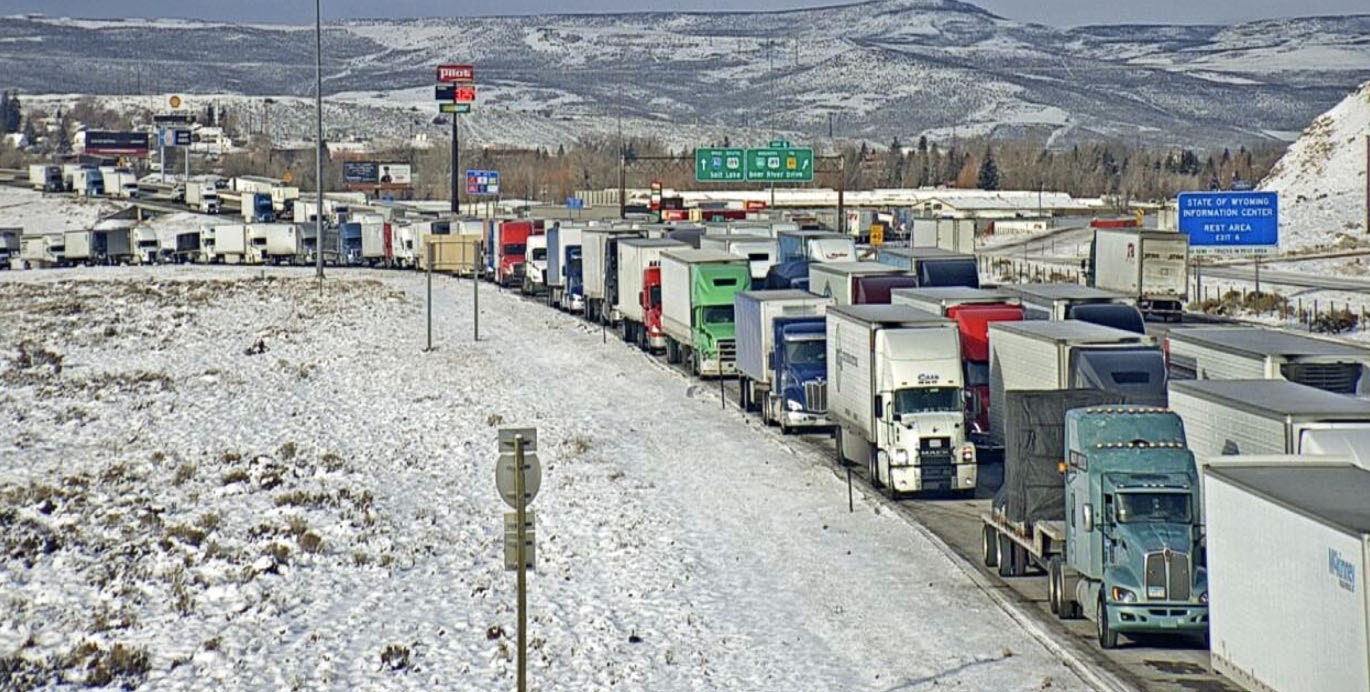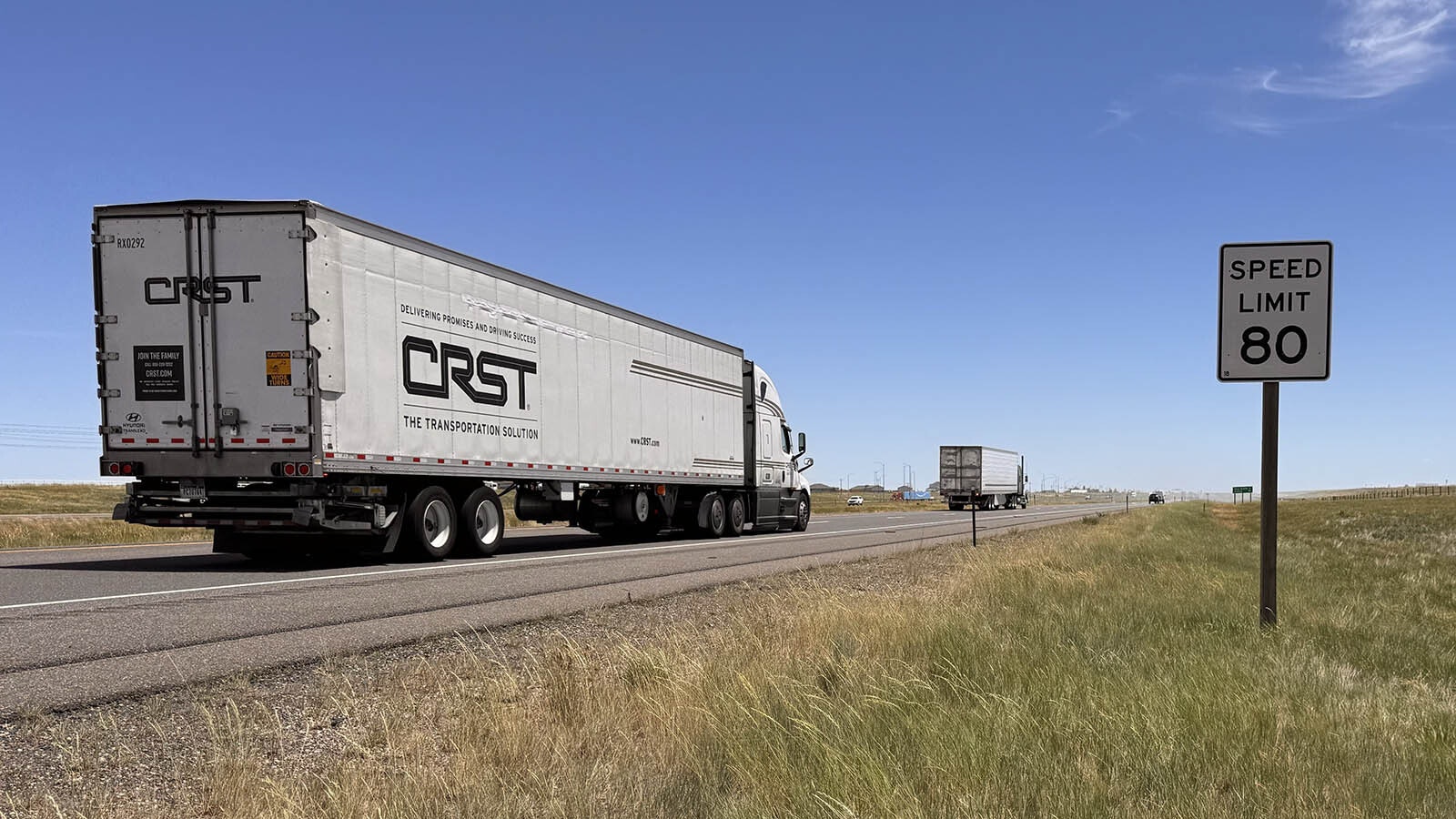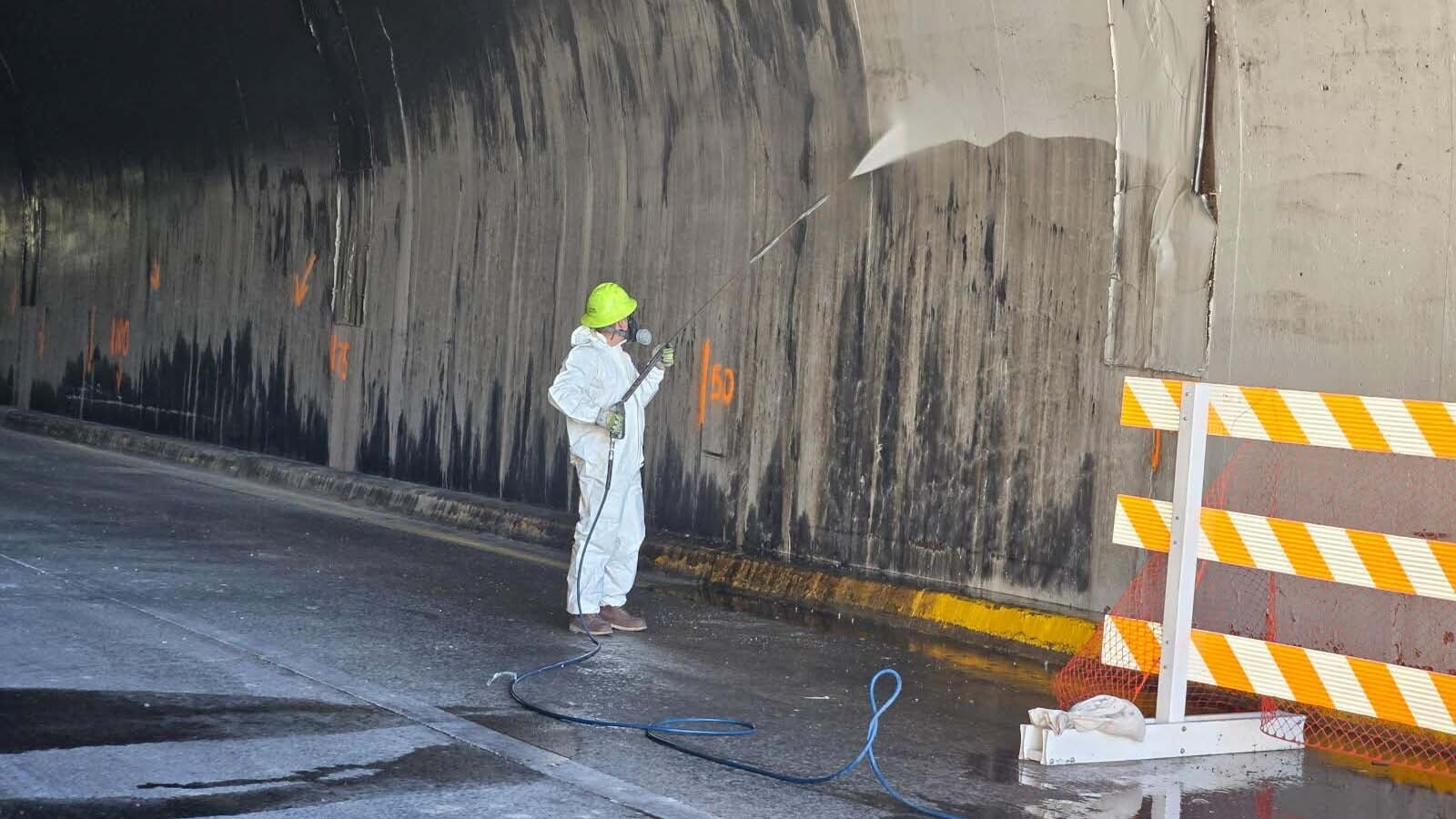The Wyoming Department of Transportation has a few tricks up its sleeve when it comes to keeping cars and trucks “moving” during a weather event like the ones that slowed travel on interstates over the last few weekends.
Traffic on Interstate 80 in southwestern Wyoming was at a standstill for much of the weekend due to a storm that caused 91 accidents between Thursday and Friday.
Those types of closures, which happen often during the winter months, can cause real problems for locals who live off the interstate and can put a strain on service stations, restaurants and hotels in communities where the traffic is backed up.
“When you shut down a road based on weather, trucks keep coming from either the west or the east,” said WYDOT Director Luke Reiner. “Eventually the town where you shut down the road because of the storm, it fills up with trucks. So then you’ve got to go back to the population center that is NOT affected by the storm and close the road there, so that you can start stacking trucks and handling the interstate traffic, because there’s no room at the road where (the closure is) at.”
Reiner used a hypothetical closure in Rawlins as an example to describe a process the department calls “rolling closures.”
“Let’s say that we close the road in Rawlins and it’s closed eastbound and westbound,” he said. “So you close in Rawlins, and all of the traffic keeps coming and coming and coming. And finally, Rawlins is filled with trucks, and there’s no place for them to sleep, and there’s no hotel rooms for the people traveling and cars. And so then we back up to where we close the road in Rock Springs. That’s a rolling closure.”
But for Wyoming residents who want to avoid the rolling closures and use other highways to get from one part of the state to another, WYDOT has a tool it uses to keep traffic moving during storm events.
“We do have a very good program called W-TAP, which is the Wyoming Travel Authorization Program,” Reiner explained. “And a portion of that is permission to travel — for Wyoming residents — during a rolling closure.”
Reiner said that Wyoming residents can sign up for W-TAP on the Department’s website (click here for the link), which will give them an authorization code to travel on roads that are off-limits due to a rolling closure. He explained that residents don’t receive the authorization instantly, they must submit their driver’s license number and then get approval from WYDOT.
“Using that example I just gave you, the road between Rawlins and Rock Springs, that would be fine,” Reiner said, meaning that the weather impact would be in Rawlins, and the highway between Rock Springs and Rawlins would still be safe to drive. “We don’t care if you’re on that road, if you are going to stay in Rawlins. So if you want to run to Rawlins, and then you want to go north to Muddy Gap and go to Casper, we want you to do that.
“But the way you get authority to go around the gate, is you sign up for W-TAP, and specifically sign up for rolling closure authorization” he continued. “Because then we’ll send you a secret code, and you give it to the nice trooper at the gate, and he’ll let you go by.”
Another scenario that WYDOT deals with during snow events has to do with local residents who aren’t trying to use the interstate to cross the state – they’re simply trying to get home. Reiner said that there’s a program called Wyoming Authorized Travel that addresses that issue.
“Sometimes we close a gate – but we only have so many gates, and it’s possible for the first 10 miles beyond the gate, that the road is fine,” Reiner said. “If you live in that 10 miles, you may want to go home. And the WAT gives you permission to go around the gate and go to your house. And the WATs are issued from mile post to mile post. And again, you can sign up for it. And again, it’s a tool to help you move around the state effectively during snowstorms.”





